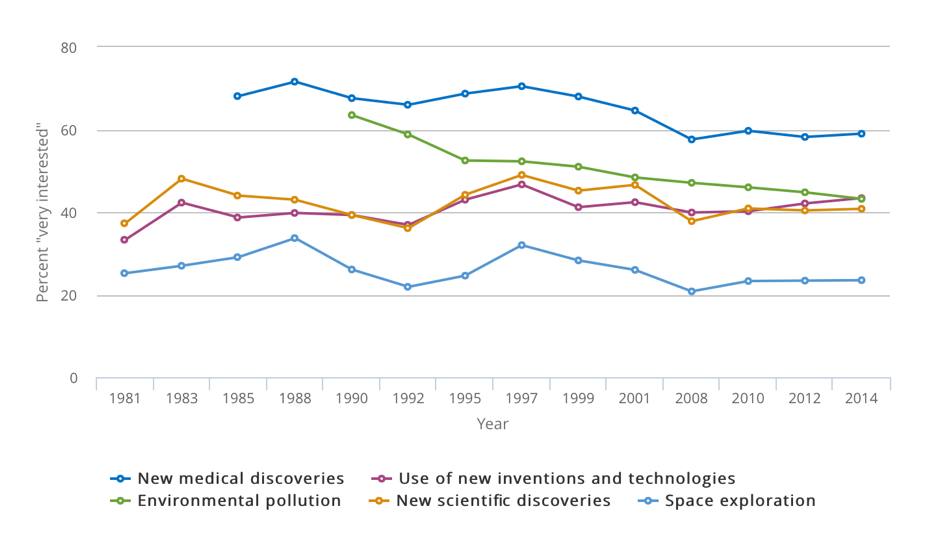by Jennifer Casiano  In 2007, Larry Page, co-founder of Google stated, “Science has a serious marketing problem.” Ten years later, we are still struggling. We just haven’t learned how to effectively communicate science. We publish our results and present at symposiums, sure, but what about the non-scientific community? What are we doing to communicate the importance of our results to them? Last week, I had the opportunity to participate in the Annual Fellows Workshop at the NIH. One of the main topics of the conference was science communication and how to engage the public. One of the speakers was Dr. Sara K. Yeo, an Assistant Professor in the Department of Communication at the University of Utah. Her talk and discussion panel provided useful information I could combine with my own personal experiences highlighting the importance of communicating science to others. Social media and other sharing platforms allow us ample opportunity for promoting science. People are often connected online, looking for innovation, answers, and inspiration from each other. Here are some examples of how we can communicate science to non-scientific groups using the web:
In 2007, Larry Page, co-founder of Google stated, “Science has a serious marketing problem.” Ten years later, we are still struggling. We just haven’t learned how to effectively communicate science. We publish our results and present at symposiums, sure, but what about the non-scientific community? What are we doing to communicate the importance of our results to them? Last week, I had the opportunity to participate in the Annual Fellows Workshop at the NIH. One of the main topics of the conference was science communication and how to engage the public. One of the speakers was Dr. Sara K. Yeo, an Assistant Professor in the Department of Communication at the University of Utah. Her talk and discussion panel provided useful information I could combine with my own personal experiences highlighting the importance of communicating science to others. Social media and other sharing platforms allow us ample opportunity for promoting science. People are often connected online, looking for innovation, answers, and inspiration from each other. Here are some examples of how we can communicate science to non-scientific groups using the web:
- Join a scientific blog
- Share scientific news stories and discoveries with friends and family and explain their importance, and try to spark conversations
- Participate in and volunteer for science advocacy groups
- Share peer-reviewed articles with a brief explanation of the issues discussed or share a summary of the article
- Create a web page for a specific group (e.g. teenagers, young adults, cancer patients, people interested in infectious diseases, etc.)
In a study conducted by the NSF, less than 3% of the nightly news is about science, space, and technology; and 2% is about biotechnology and biomedical research. Despite the lack of news reporting, the study shows there is public interest in issues such as medical discoveries (60%) and new inventions (37%). Therefore, we can, and should, take the issue into our own hands and use social media, the internet, and our other resources to bring scientific news to the general population.  Network nightly news coverage of science and technology: 1988–2014. (Based on ABC, CBS, NBC). Dr. Yeo’s advice for people that want to start promoting science:
Network nightly news coverage of science and technology: 1988–2014. (Based on ABC, CBS, NBC). Dr. Yeo’s advice for people that want to start promoting science:
- Define what you want to promote: medical research, microbiology, immunology, etc.;
- Establish where you want to promote science: Facebook, YouTube, a blog, or your own website perhaps;
- Decide whether you want to have collaborators or tackle the project on your own;
- Tailor your communication to the audience you want to reach.
 Public interest in selected science-related issues: 1981-2014 (NSF) The key element is to keep it simple. Ask non-scientific groups for feedback and see what they understand in your message. Use surprise and curiosity in your titles; show and explain the data. You should remember that the art of knowing and promoting science is to love it!
Public interest in selected science-related issues: 1981-2014 (NSF) The key element is to keep it simple. Ask non-scientific groups for feedback and see what they understand in your message. Use surprise and curiosity in your titles; show and explain the data. You should remember that the art of knowing and promoting science is to love it!
JCM